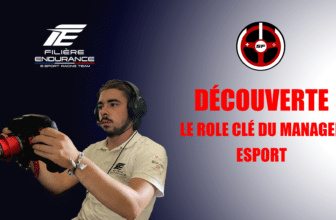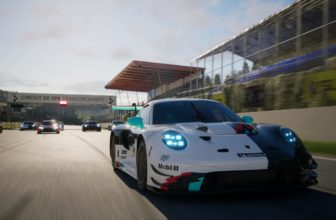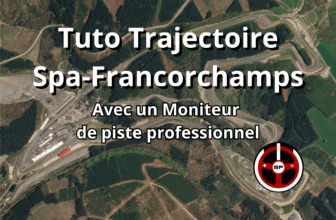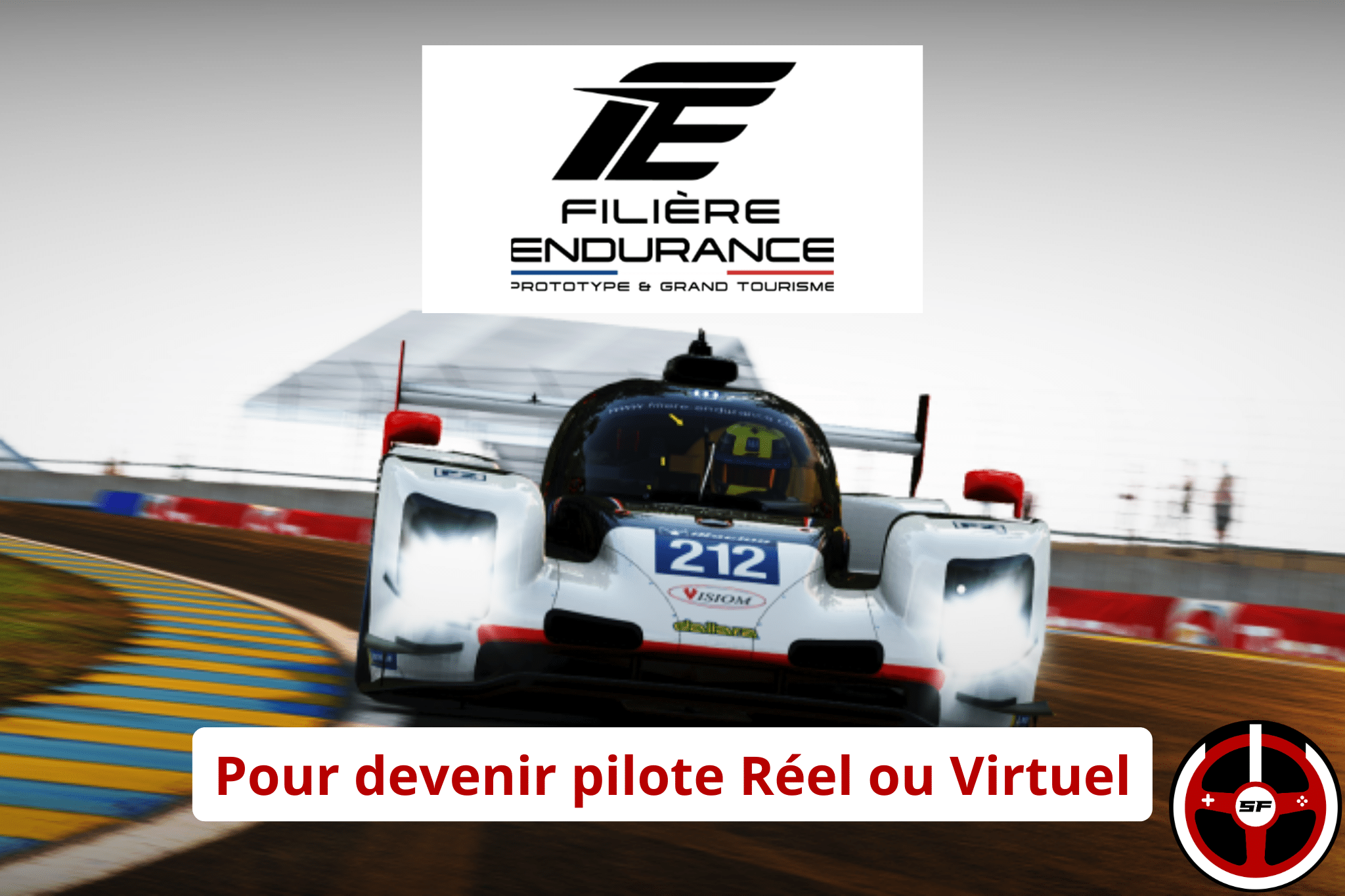
As I’m sure you’re aware, what we’re constantly looking for on this site is the link between simracing and reality. We literally spend our time trying to figure out how to get closer to the sensations of the track, not only by trying out equipment but also by meeting industry professionals. In this never-ending quest, we were lucky enough to cross paths with Filière Endurance Prototype & Grand Tourisme.
In a few words, Filière Endurance is both a school that propels talented youngsters into GT and Prototype endurance racing. But it’s also a highly successful eSport structure that can serve as a springboard to real-world racing for the most talented drivers.
The simracing/real racing junction is therefore perfect! That’s why Flo and I have decided to bring you a series of articles in partnership with Filière Endurance. As the weeks go by, you’ll discover their teams, missions, victories and challenges! But let’s start at the beginning, by discovering together exactly what Filière Endurance is, thanks to an interview with Mathis Poulet, manager of the eSport section.
Hi Mathis, could you start by explaining what Filière Endurance is in concrete terms?
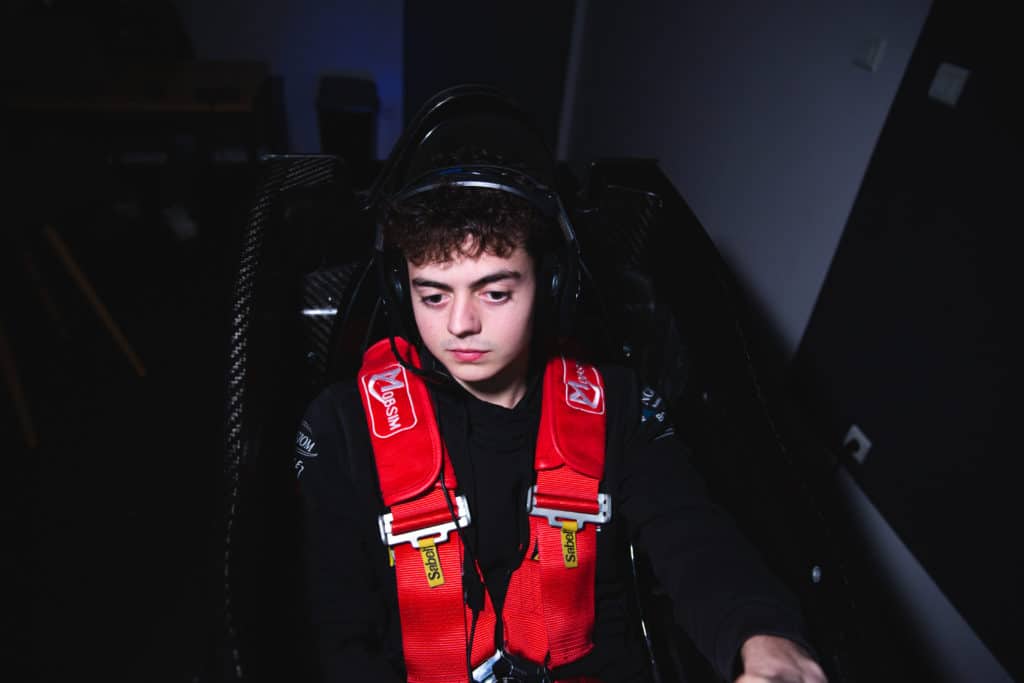
Filière Endurance is a structure created by Jean-Bernard Bouvet in 2019. It’s an advanced training center for drivers aiming for a seat in endurance racing, in both GT and Prototype. Jean-Bernard Bouvet is an active racing driver with over 30 years’ experience in motorsport. He has competed in the 24 Hours of Le Mans 9 times.
And along the way, Jean-Bernard realized that there was a lack of preparation for endurance racing. For single-seaters, there’s the FFSA Academy, but there was no specific course to prepare for endurance racing.
Jean-Bernard Bouvet from Manceau is also a coach. For example, he coached Sacha Fenestraz , who is now a Formula E driver. On the strength of this coaching experience, he decided to embark on a great adventure: the creation of Filière Endurance.
What does the training course involve?
I took part in the very first selection of drivers, which took place in 2019. I was able to join the Filière at the start of 2020. My course lasted 3 years. Back then it was 3 years of training, but now it’s been condensed into 2 years. In fact, we realized that in 2 slightly more intensive years we already had all the weapons in hand. You have time to learn all the theoretical courses, as well as physical and mental preparation.
It’s a very rich two years! It’s really a whole set of skills that enables you to learn everything a professional pilot needs. That includes theory and driving… But also communication and marketing, and learning how to put together sponsorship dossiers. Because today’s motorsport partners are almost as important as the driver.
There’s also, of course, preparation on the simulators and a whole range of follow-up by the instructors. Jean-Bernard also travels to race meetings to coach drivers. The aim is to provide theoretical support with “lessons”, even if these are much more fun than at school. On the other hand, there’s the track part, where you’re really immersed in the action.
Sacha and I are in our fourth year, so we’ve moved over to the more managerial side. We no longer have any theoretical knowledge, which we’ve acquired. On the other hand, Jean-Bernard’s experience and network help us find the right cars with the right budgets. So beyond the training aspect, there’s also the added value of being able to place ourselves in teams. And still with a view to building bridges, he decided to create the Filière Endurance eSport.
What is the Filière Endurance eSport?
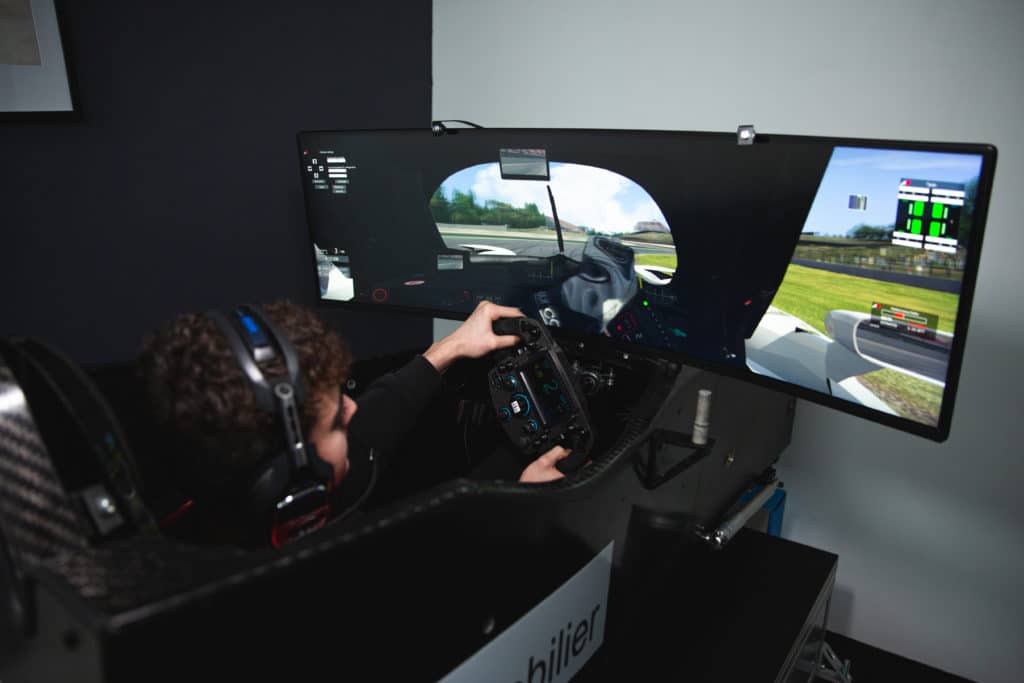
We created the eSport segment of Filière Endurance in June 2022. Jean-Bernard and I were the first to work on this project. He trusted me to be the manager of this section. The project itself was launched in April 2022, but the wheels started turning just 1 year ago in June.
Our aim with the eSport section is to create a bridge between the virtual and the real thing. The team’s ambition is to be able to take part in the virtual ACO 24 Hours of Le Mans in 2025 or 2026. The date will depend on how far we’ve come. To get there, we’re pushing our drivers’ skills on simulators. And for the most talented among them, we’ll take them to the real thing if they have the determination and desire.
Today, eSport is relatively close to the real thing in terms of work load and investment in driving preparation. It’s pretty close in these respects. Even if, of course, there are still big differences between virtual and real. But we’re close enough to say that very good simulator drivers can also be very good real-life drivers. Take Léo, for example! He’s a driver who started out on the eSport side and now also drives in the real Endurance sector. And he’s aiming to do a few MITJET races this year.
That sums up the genesis of the project so far!
How do you get into the Filière Endurance?
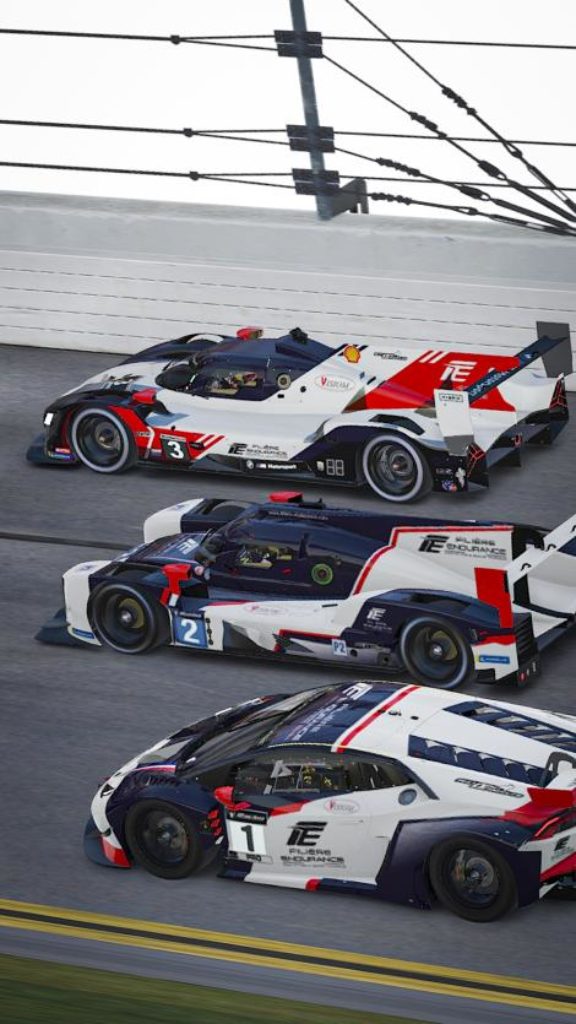
It’s a selection process. You have to contact Jean-Bernard directly via the website. Obviously, you have to come up with a project, know what you want to do and show your determination.
Then there’s an interview with Jean-Bernard, during which he’ll assess your abilities. Of course, it’s preferable to already have somekarting experience. Entrants are generally between 18 and 22 years of age.
Sometimes they’re a little more experienced. They may have come straight from single-seater racing, with a year in Formula 4 for example.
But overall, the profiles are quite varied, but ideally a background in karting is important. Because without experience, it’s going to be complicated on the cars, and budgets are important.
So it’s quite natural and straightforward. You contact Jean-Bernard, and if the indicators are green and the determination is there, you’re in.
What about the age range for entering the program?
The age range for entering the Filière Endurance is 16-22. In 2020, we were at 16-20, but we’ve now widened the age range to 22. Of course, the course can be adapted for older drivers… But if you start in MITJET at 24 or 25, it’s complicated to move up to Pro driver afterwards. The aim of the Filière Endurance is to train professional drivers. And when you start late, you find yourself up against youngsters who don’t necessarily have the same energy on the track.
There’s also the whole aspect of career progression. A driver who starts at 16 may be ready for Le Mans at 21 or 22. Whereas a driver who starts at 24 or 25 isn’t ready for Le Mans until 31 or 32. And unfortunately at that age, unless you’re exceptional, it’s very, very complicated to go Pro and find a seat. The later you get in, the more complicated it is. That’s why Jean-Bernard has defined this age group as the most suitable in his experience.
On the simulator front, how do you get noticed by the Filière Endurance eSport?
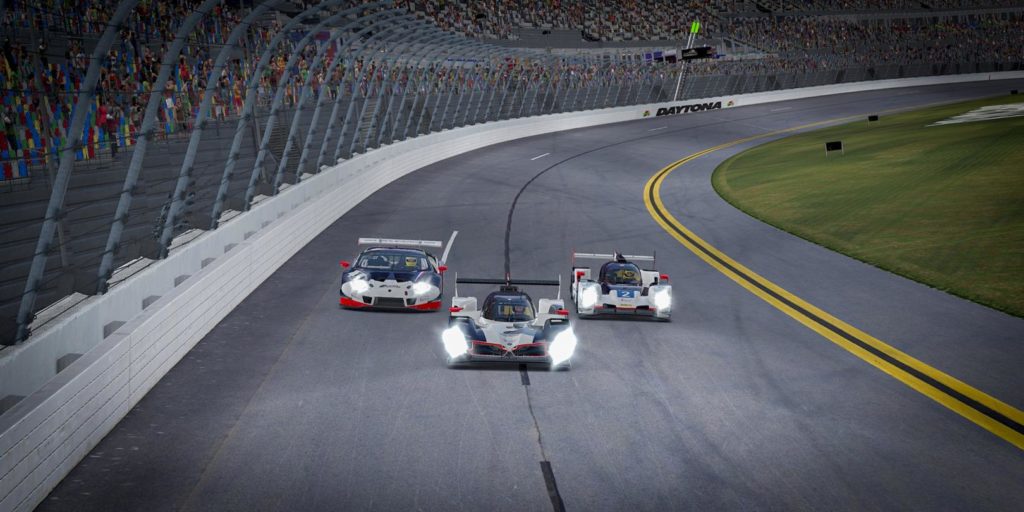
For the eSport part, it’s a bit like for the real thing. You have to contact us. At the moment, we’ve got a good team of drivers that we’re helping to progress and work together. Our aim is to work over the long term and not to change drivers every 6 months or every year.
To enter this section, there are also selection stages on the simulator. We’re probably going to bring in a few more pilots, but at the moment there are 14 of us and we wouldn’t like to go beyond 16 or 17.
Our aim is to keep things on a human scale, and once you get past 20 it becomes complicated, as there are too many crews to manage. Let’s not forget that there are only two of us, Thomas and I, managing this eSport team.
But to answer your question, all you have to do is contact us via the website, social networks or whatever. There’ll also be a test drive to see if we’re getting on with the team. We also analyze behavior , because in eSport, some drivers have a rather navel-gazing mentality. So there’s nothing wrong with that – everyone is who they are – but our team has a certain dynamic and atmosphere that we want to keep as it is.
Is there a particular game you need to be good at for these interviews?

For the moment, we’re only on iRacing. Simply because it’s the easiest game for online multiplayer. We’re also waiting to see what happens with the virtual 24 Hours of Le Mans, as rFactor 2 will probably be replaced by Le Mans Ultimate from the 2024 edition.
So we’ll have to prepare ourselves for the simulation that will be chosen, as it takes a huge amount of time, investment, structuring and experience to switch from one simu to another. To take part in the event, the ACO selects the entries, and of course we’ll need to put together a solid file if we’re to secure our place. But right now, we’re testing new drivers on iRacing.
Do you organize meetings between eSport drivers?
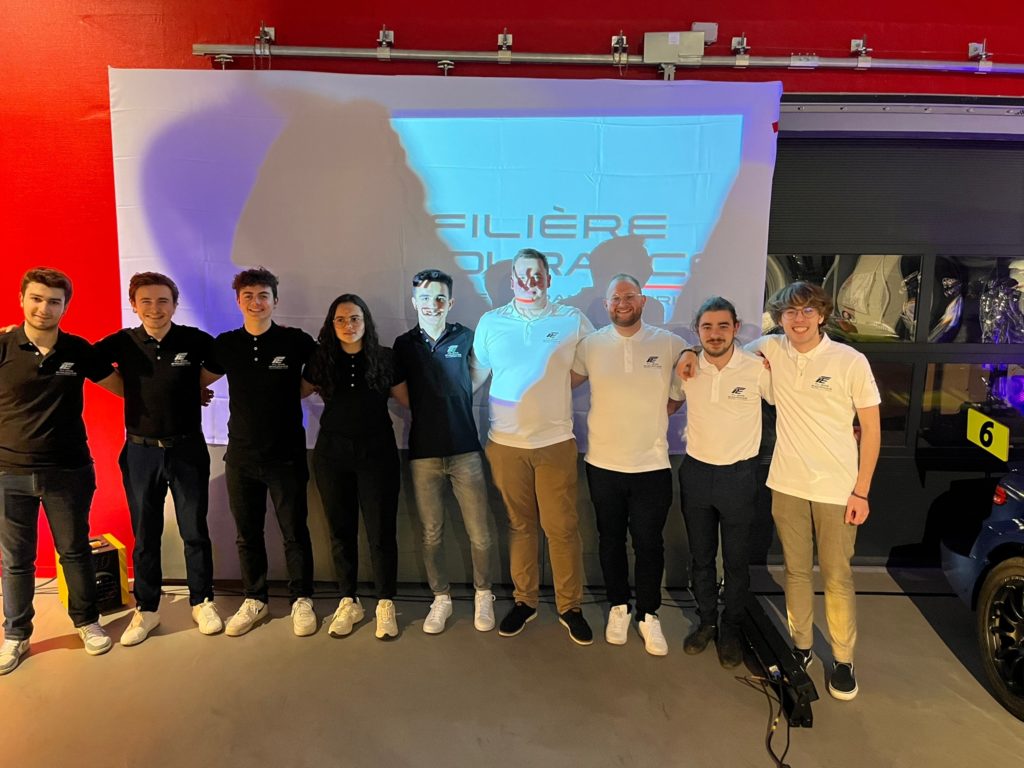
For the moment, everyone drives from home, because we don’t have a place to bring all the team members together. On top of that, we have drivers from all over the world. From the four corners of France, but also from Belgium and Morocco, for example.
But in the future, we’d like to set up training camps that will bring our drivers together in Le Mans for 3 or 4 days. This would enable us to keep the same concept as in the real Endurance Filière. In the real world, we organize week-long camps.
In eSport, we could keep this concept but remove the physical part, which is less predominant on the simulator. We could work on group cohesion, because it’s all the more difficult to achieve cohesion when we’re all so far apart. And we really want to put people first.
You’re lucky enough to drive both real and virtual. What do you feel is still missing from the virtual?
Let’s just say that virtual racing is really great because it allows real drivers to learn the circuits beforehand. You can prepare on simulators, and by the time you get out on the real track, you’re already pretty good. At the moment, what’s a bit frustrating, especially on iRacing, and the reason why I do very few races, is quite simply the behaviour of the other drivers on the track.

As it’s a simulator, some people see it as a Formula One game. I’ve got nothing against Formula One, it’s a great game, but it’s more of an arcade. On iRacing, what you’re looking for is performance, and that’s why there are eSport teams. And today, despite the ranking systems, there are big disparities in levels.
Some don’t master the car, come back to the track chaotically… Things you’d never do in real life because you’d be too scared of breaking the car. That’s what I still think is a shame about simracing. Players lack respect not only for other players, but also for their machines!
Even in endurance racing today, there are behaviors that mean that in one class, out of 20 cars at the start, you’ll only have 7 left at the finish. And that’s because there’s no notion of real racing and no fear of breaking the machine and injuring yourself. And then, at worst, if you lose ranking points, all you have to do is behave yourself for two or three races and it’s all forgotten.
It’s too permissive. These are behaviors that should be banned, or at least subject to real penalties and control. And real control of liability. Because today on iRacing, if there’s a crash, both drivers are penalized. It’s the kind of thing that breaks morale and doesn’t make you want to go racing again.
Isn’t this kind of behavior driven by the fact that the cars have little mechanical damage and no wear and tear on parts?
That’s for sure! In terms of damage, you can cut the vibrators with the cars without any wear or broken parts. In reality, no Proto or GT car would cut in this way. And this is something I find even more amplified on rFactor 2. On iRacing, the vibrators are really nasty. And the off-track management is very punishing. It’s even too much compared to the real thing, but at least it tempers things and keeps things from getting too messy. Fortunately, there are also races where there are no retirements and everything goes smoothly. And we’re still working on simulators, which have to be more accessible than the real thing, otherwise no one would drive them at all!
And what are the moments when you really enjoy SimRacing?

What I really enjoy is doing sessions with friends. We don’t take ourselves too seriously and we take Monster Trucks on dirt tracks to have fun. But what I really like is real racing. I love it when the flag drops and it’s almost like a real race. Whether it’s the preparation or the strategy, I like to approach simracing as if it were real.
The organization between the virtual and the real is almost the same. Fatigue management is different. The simulator is mentally more tiring, but physically much less so than the real thing, of course. We don’t have the same pressure, as I was saying earlier, especially when it comes to breakage. If you crash the car, you press echap and do the race again the next day or the next week.
And of course, the coolest thing about the simulator is winning. Battles with fast drivers who really know how to fight cleanly make for a lot of fun! I’d say almost as much fun as in real battles. That’s what I like about it: getting back to the thrill of a real race.
What’s next for Filière Endurance eSport at the end of 2023?
We’ll be taking part in all the endurance races planned by iRacing. The 6 Hours of Watkings Glen, the Petit Le Mans on Road Atlanta. Certainly the Suzuka 10 Hours too. There are also the 24-hour championships, which take place every two weeks. They demand a big rhythm, but in summer we all have a bit more time.
We also organize private races. The organization is called Spirit to Le Mans. At the end of each iRacing season (every week 13), we launch Open Entries and organize events. For example, in March we ran Le Mans Classique with vintage cars. It went really well, with around sixty entries. The next one is on the Silverstone track. And we’re also planning a fun event for later on, which I’ll tell you about when we’ve got things ready.
We’ve got lots of other event projects in the pipeline to show that the Filière Endurance eSport and the Filière Endurance réelle are there!
A huge thank you to Mathis and Filière Endurance!
Ahuge thank you to Mathis and the whole Filière Endurance team for their confidence. As I said in the introduction, expect to hear from them regularly on the site! And why not one of these four on the YouTube channel ;). I invite you to discover their website. And if you’re determined to become a real or virtual pilot, don’t hesitate to contact them to find out more about their courses!



